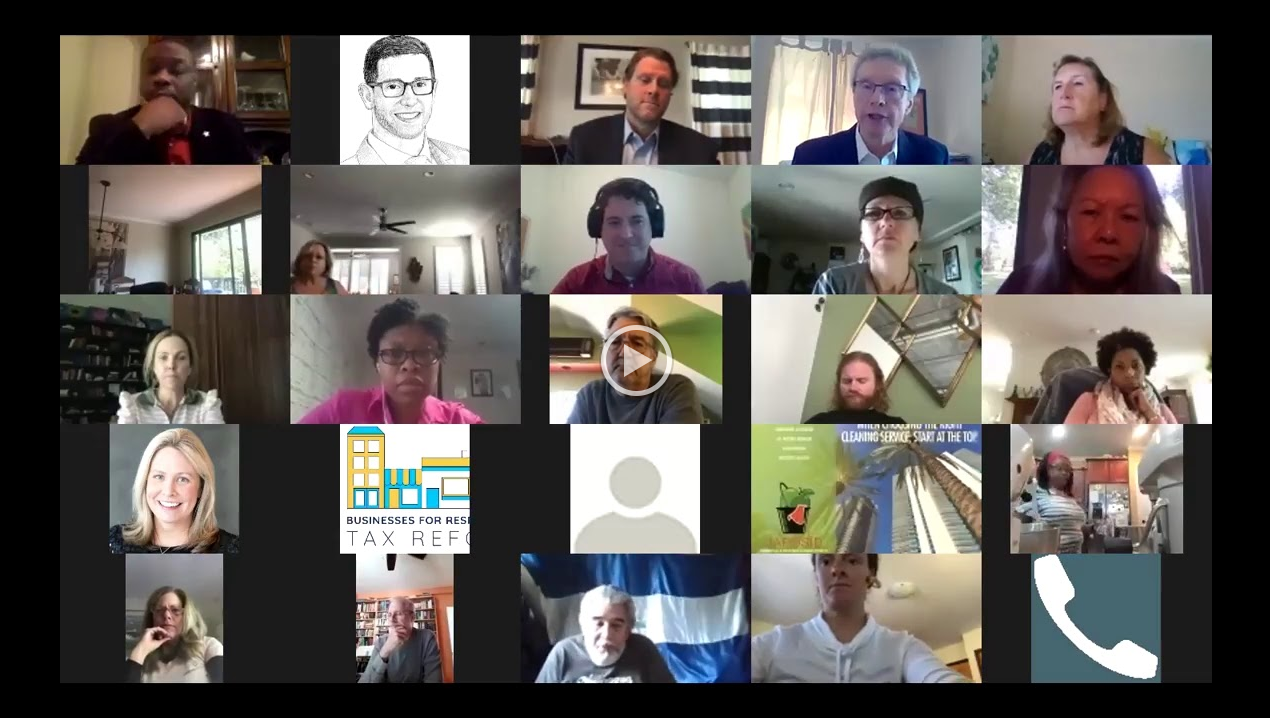There was once a stereotype that the accounting profession, and accountants themselves, were resistant to change. That they were the picture of staid and boring; bean counters with visors, poring over a business’ period financials and looking at past data on a granular level.
Most who’ve been around the profession long enough to remember those stereotypes are confident those days are long gone.
“In order for the stereotype of an accountant to change, accountant’s first need to look inward and drive change within themselves first,” said Garrett Wagner, CPA.CITP, CEO and founder of C3 Evolution Group, which assists firms with technology and workflow practices “We are a profession of brilliant, funny, unique, entrepreneurial, and innovative people, it is time for us to shine. Time to show our brilliance, our skills, and show others how we can innovative. The age of the bean counter has come to an end, now more than ever before we have the ability to set our own path forward and lead through innovation.”
In the past 20 years or so, the profession, led by thought leaders and technology innovators, have developed a platform from with they now operate as one of the most technology advanced professions in our society.
From the early days of shared computing in the 1970s, to the adoption of personal computers in the 1980s, to the emergence of the internet in the 1990s, accounting professionals laid the ground work for early adoption of technologies that have dramatically increased their productivity. The changes that would emerge and become central components of accounting firm success in the next 20 years would be critical to helping firms achieve even greater success and overcome the challenges that would soon face society at large.
Technology as a Foundation of Strength and Adaptability
By 2000, Americans were more rapidly integrating the internet into their daily lives, not just for social functions, but into their work lives. And savvy accounting firms were starting to deploy technologies that allowed remote access to client data. This interconnectivity was spurred by the need for better access to real-time data, instead of relying on already outdated monthly reports. By the early 2010s, the advent of smart mobile devices and apps increased firms’ access to their client data, and gave them greater tools with which to use it to proactively move their clients toward more profitable operations.
By the late 2010s, innovation leaders harnessed the power of artificial intelligence to give firms even greater knowledge tools and resources. This was well beyond performing rote tasks that automation tools excel at. AI gives users true insight, acting as a business analyst that is able to reach into all business data sets, from financial, time management, billing, expenses, AP, AR, client communication, and other aspects of a business’ operations, to gain a greater understanding of what that information means when examined as a whole, instead of as disparate components.
The primary focus of these innovations, according to Shafat Qazi, has been to help businesses and the accounting firms that support them be more in tune with the data they use to run and build those businesses. Qazi is the founder of BQE Software, which has evolved from developing time and billing systems in the 1990s to being a maker of advanced, AI-driven management systems today.
How Technology Mitigated COVID-19
The Coronavirus pandemic struck quickly in 2020, and it did so unequally. Firms in larger cities on the U.S. coasts saw the greatest immediate impact as most of those states (California, Oregon, Washington, New York, New Jersey and Connecticut) were fast in implementing stay at home orders. In the early days, most can probably recall the eerily empty major highways in Los Angeles, or the empty images of Times Square. But geography was not the greatest determinant as to whether firms would be quick to regain their workflow.
The businesses and professional firms that serve them who were most adept were those that had already made investments in technologies that allowed full remote access. As Qazi noted, while those advancements, such as cloud-hosted programs, were initially developed to increase productivity, they now became an imperative to firm survival during the pandemic.
In 2019, the ability to access business data and work remotely was a competitive advantage and a benefit that some staff could make use of, either during business travel, or to occasionally work from home. In 2020, remote access to all business and firm management systems became critical as health risks, laws and transportation shutdowns made working from an office impractical or impossible.
Where some firms had to rush to learn about and implement remote tech for their own operations and to help their business clients implement them also, advanced firms had already done so. While many still had to invest in additional hardware (mostly laptops and office supplies for workers now engaging from home), they already had the platform for an all-digital work environment and client engagement workflow. Zoom meetings would take some learning, but these firms were able to almost instantly transition to the new (hopefully temporary) normal of working while sheltering in place.
Emerging and Building the New Normal
It is clear that technology has played an integral role in allowing professionals to continue to provide client service during the pandemic, whether the firm and client businesses were located in the hardest hit areas or those with lesser restrictions on business operations. Had the pandemic surfaced in the year 2000, American businesses would have had far less resilience, because of the much lesser ability to work remotely while maintaining full interconnectivity with clients, staff, data and technology systems.
Just as much so, new technologies will help create the new normal as we emerge from the COVID-19 era, and businesses and firms look to build and continue on their quest for improved productivity and interconnectivity. The technology developers that have adapted a continuous evolution mindset, and are even willing to dramatically change their own legacy systems, are uniquely positioned to be the drivers of the technologies that build this new normal operating environment.
Long before the coronavirus, BQE had established itself as a successful maker of billing systems for accounting and law firms, engineers and architects, providing these firms with advanced-at-the-time solutions that were tailored to these professions. By 2012, after more than 15 years of building these systems, the technology vendor had a reliable recurring annual revenue from these products. But Qazi saw the future for these professions and their business clients was in automation and artificial intelligence.
Going All-In on All-Mobile
So BQE made the decision to move their products to cloud-only, with modern APIs and interfaces. But to do so the right way meant building an entirely new system that encompassed the features and capabilities of all six of their existing desktop/web-based systems. Going to a mobile-first model took five years, a $25 million investment and 110 full-time developers working with accounting and other professionals. And on the day they launched the new BQE CORE platform, he made the decision to stop selling the legacy time and billing systems, which were generating more than $15 million per year. This was a bold, but confident bet on the future.
BQE expected sales of CORE to take at least a year to reach the point where it would exceed the sales of the previous systems, which had been on the market for 16 years. CORE was immediately popular and exceeded the combined sales of all legacy products in just four months.
“CORE was so compelling, beautiful and well-built, that more people were buying CORE than all of the other products combined,” said Qazi. “When you believe in what you do, and you do it the right way, you can achieve great things and disrupt the established models.”
That first move to a mobile-first design philosophy by BQE would be the beginning of its continuing innovation evolution, with the company then introducing BQE CORE in 2017. CORE offers engagement and project management, billing, time and expense management, HR, electronic invoicing and payment acceptance, automatic invoicing and mobile friendly tasks like receipt capture. BQE added artificial intelligence capabilities in 2019, which gives the system the power to take all the pieces of a business’ data and run them concurrently against each other. This gives users the ability to instantly have access to period over period data, competitive analysis, productivity information, profitability and more. BQE CORE AI won a CPA Practice Advisor Innovation Award in 2019.
Another key to building technologies that will advance the profession is enabling different business management systems to work with each other. This allows businesses using various other programs for different functions, such as QuickBooks or inventory management, to continue using those systems, with the data integrating with the CORE AI platform. As a result, the system can integrate with virtually all business management utilities, including Microsoft Office 365 and Google Calendar.
“My firm has been using BQE for 13 years, originally on the desktop version and now CORE, and it now outpaces both QuickBooks and Xero in terms of innovation and capabilities for any company that needs project accounting,” said Gerry Anderson, CPA, CMA, founder of business management consulting firm Logicon Solutions. Anderson also uses BQE in his separate accounting firm Blue Canyon.
“The ‘bots’ in CORE have greatly streamlined a lot of our work with clients, especially the phone app, which has been a game changer for capturing data,” he added. “Overall, CORE has helped us and our clients save a lot of time and money.”
Continuing Innovation
Many technology companies ramp up staff while developing new products, then cut back those developers when the product is released. BQE, however, has retained it’s staff and challenged them with continuing to develop the product through new enhancements, such as credit card and bank integrations, mobile receipt management and mileage tracking, the addition of key new modules such as HR, and e-payment integration.
BQE was also were the first to add natural language capabilities to an accounting and business management system. Through CORE AI, this feature allows users to speak to the system through an app or their smart speakers, such as Alexa, asking questions such as “What is our year-over-year profitability?” Or, “What engagements or projects are behind schedule?” The options are almost endless, from AP and AR, to client histories and staffing issues.
BQE has recently rolled out a new Client Relationship Management module for CORE, which like the other modules, is specifically designed for professional firms including accountants and engineers.
“A major differentiator with CORE CRM is that it is a client relationship management system, not a customer one. Firms have clients, not customers, and the relationship they have with them is different than other industries,” said Qazi. “CORE CRM was built to help firms in their daily activities and to win more clients, and keep their existing clients happy.”
Building for the Future
The move to all-mobile computing started with the early days of the cloud, but has grown considerably since then. Those early cloud systems were often limited in capabilities and lacked interoperability with other systems and some mobile platforms. All-mobile systems are designed to be ever-present, with the same functionality available to users whether they are in their office, in a car, on a plane or at the beach.
In some ways, today’s business management software is akin to the electric car industry. Early models of electric cars have been available for decades, but only reached true viability with Tesla, as the company was able to overcome issues related to speed, battery life, and style. Likewise, early versions of cloud software have been available for more than two decades, but most fell short on functionality, integration and user interface. Only recently have all-mobile systems like BQE’s CORE overcome those issues, and like Tesla, CORE’s operating system is continually being improved and automatically updated by its developers.
When we are back to whatever the new normal is, eventually there will be some return to offices. But the workforce with also see a continued and growing distribution of staff and clients. BQE CORE and other all-mobile technologies will be key to maintaining and enhancing productivity in accounting and professional services firms, giving users the tools they need to perform their engagements more effectively, and providing management with powerful oversight tools that help them ensure profitability and the best use of staff and resources.
“Now more than ever before is our chance to stop being simply reactive,” said Wagner. “Now is our time to be proactive with our clients and work side by side with them helping them rebuild and clarify their direction as they move into a post-pandemic landscape.”
Thanks for reading CPA Practice Advisor!
Subscribe Already registered? Log In
Need more information? Read the FAQs




